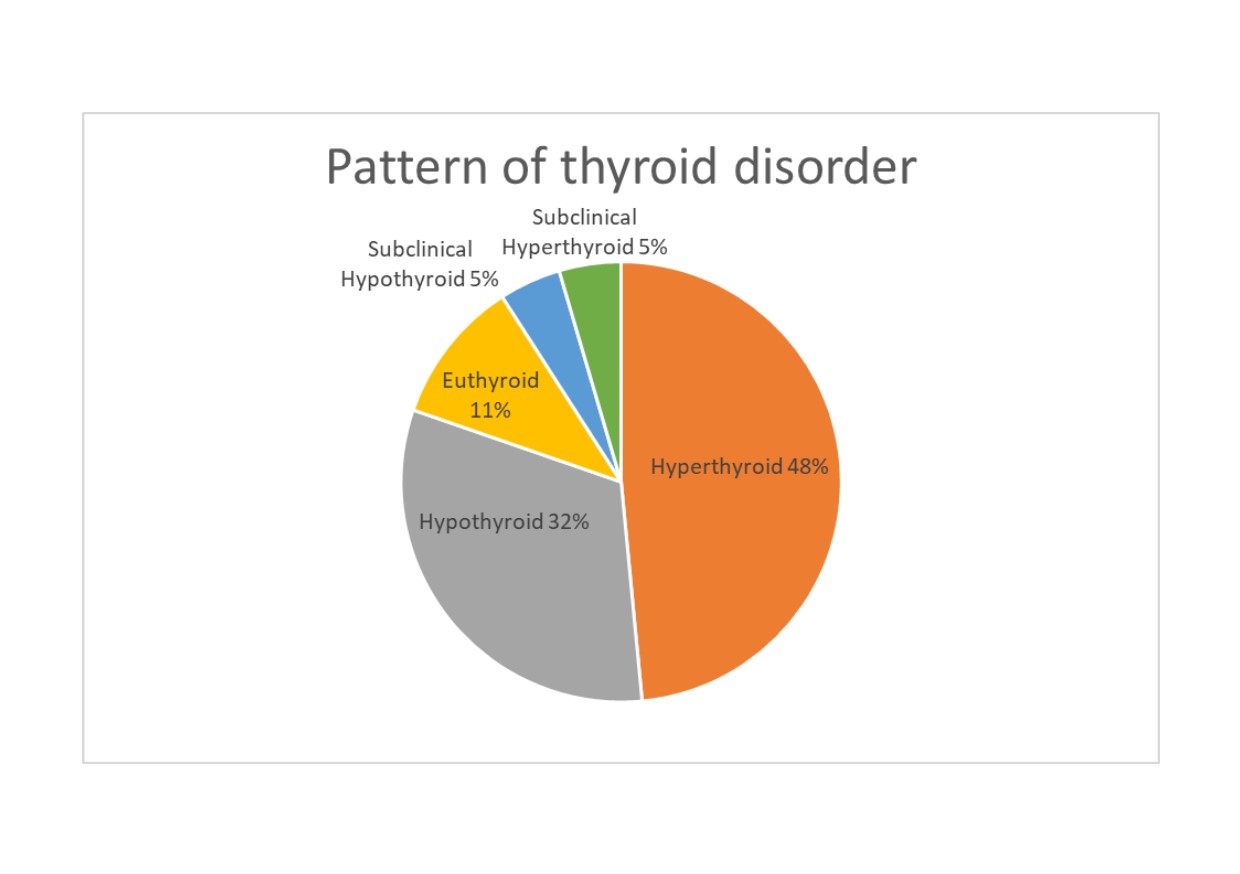THE DYSLIPIDEMIA AMONG PATIENTS WITH THYROID DYSFUNCTION IN AN URBAN TERTIARY HOSPITAL: A CROSSECTIONAL STUDY
DYSLIPIDEMIA AND THYROID DYSFUNCTION IN LAGOS
Abstract
Background: Thyroid disorders are endemic in iodine-deficient areas of the world, including Nigeria, and have been linked to disorders of lipid metabolism. Dyslipidemia has also been directly linked to an increased risk of atherosclerosis and ischemic events. The relationship of dyslipidemia to the various spectrums of thyroid disorders has not been well documented in this environment. This study aims to determine the prevalence and pattern of dyslipidemia among the different spectrums of thyroid disorders and also determine the associated factors.
Methodology: A cross-sectional study of one hundred and thirty-two patients who presented at the endocrinology clinic of Lagos State University Teaching Hospital, Ikeja, with a diagnosis of thyroid dysfunction from December 2022 to June 2023. Their physical and biochemical characteristics, as well as their fasting lipid profile, were measured. Statistical analysis was done using SPSS version 26.
Results: The mean age at presentation was 44.69±17.34 years (range 19-82 years), and the male-to-female ratio was 17:11. Hyperthyroidism, hypothyroidism, and euthyroidism were seen in 48%, 32%, and 11% of the study population, respectively, while subclinical hyperthyroidism and subclinical hypothyroidism each accounted for 5% of the patients. Dyslipidemia was found in 73% of cases of hyperthyroid subjects, 64% of hypothyroid subjects, and 57% of euthyroid subjects, with varying degrees of severity. The severity of dyslipidemia was not significant across the various spectrums of thyroid disorders (p = 0.53).
Conclusion: Dyslipidemia is common among thyroid disorder patients. Routine fasting lipid profile in thyroid dysfunctional states is advocated.





